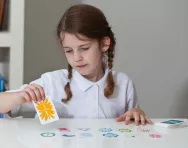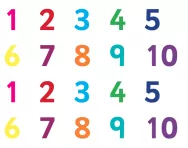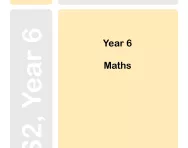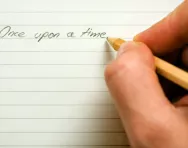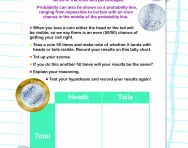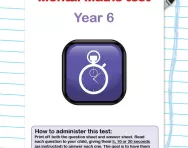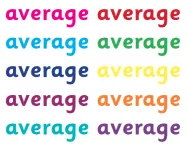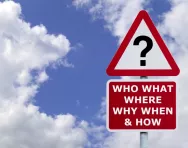Important update from TheSchoolRun
For the past 13 years, TheSchoolRun has been run by a small team of mums working from home, dedicated to providing quality educational resources to primary school parents. Unfortunately, rising supplier costs and falling revenue have made it impossible for us to continue operating, and we’ve had to make the difficult decision to close. The good news: We’ve arranged for another educational provider to take over many of our resources. These will be hosted on a new portal, where the content will be updated and expanded to support your child’s learning.
What this means for subscribers:
- Your subscription is still active, and for now, you can keep using the website as normal — just log in with your usual details to access all our articles and resources*.
- In a few months, all resources will move to the new portal. You’ll continue to have access there until your subscription ends. We’ll send you full details nearer the time.
- As a thank you for your support, we’ll also be sending you 16 primary school eBooks (worth £108.84) to download and keep.
A few changes to be aware of:
- The Learning Journey weekly email has ended, but your child’s plan will still be updated on your dashboard each Monday. Just log in to see the recommended worksheets.
- The 11+ weekly emails have now ended. We sent you all the remaining emails in the series at the end of March — please check your inbox (and spam folder) if you haven’t seen them. You can also follow the full programme here: 11+ Learning Journey.
If you have any questions, please contact us at [email protected]. Thank you for being part of our journey it’s been a privilege to support your family’s learning.
*If you need to reset your password, it will still work as usual. Please check your spam folder if the reset email doesn’t appear in your inbox.
Year 6 maths: what your child learns
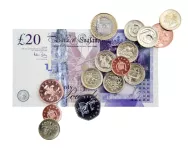
Year 6 maths will include new work and revision of earlier topics. Children should be working on three-step problems now, using addition, subtraction, multiplication and division. They are encouraged to work independently, deciding themselves on the best method of solving a problem, and then estimating their results and checking to see if they are correct. Revision will help to prepare them for KS2 SATs and secondary school – if they do not have a grasp of certain mathematical methods now, children struggle to move on to the next step.
Maths is taught through mental, practical and written lessons, and where possible, the children are shown how it links to other areas of the curriculum, such as science or ICT, as well as everyday life.
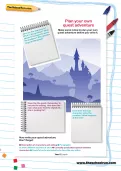

Start the Year 6 Learning Programme!
- Weekly maths & English worksheets
- Follows the National Curriculum
- Keeps your child's learning on track
Y6 maths – your child will be taught:
Number and place value
- Reading, writing, ordering and comparing numbers to 10,000,000
- Calculating intervals across zero
Calculating
- Multiplying four-digit numbers by two-digit numbers using long multiplication
- Dividing four-digit numbers by two-digit numbers using long division
- Identifying common factors, common multiples and prime numbers
- Solving multi-step problems involving all four operations
Fractions, decimals and percentages
- Simplifying fractions
- Comparing and ordering fractions
- Adding and subtracting fractions with different denominators
- Multiplying pairs of proper fractions, giving the answer in its simplest form
- Dividing proper fractions by whole numbers
- Multiplying and dividing numbers by 10, 100 and 1000
- Multiplying one-digit numbers with up to two decimal places by whole numbers
- Using written division methods in cases where the answer has up to two decimal places
Ratio and propotion
- Finding percentages of amounts
- Solving problems involving shapes and scale factors
Algebra
- Using simple formulae
- Generating and describing linear number sequences
- Express missing number problems algebraically
- Find pairs of numbers that satisfy an equation with two unknowns
Measurement
- Converting between units of measurement, using decimal notation up to three decimal places
- Working out the perimeter and area of shapes (including parallelograms and triangles)
- Working out the volume of cubes and cuboids
Geometry
- Drawing a 2D shape using given dimensions and angles
- Finding unknown angles in any triangle, quadrilateral and regular polygon
- Illustrating and naming parts of circles, including radius, diameter and circumference
- Recognising angles where they meet at a point, are on a straight line or are vertically opposite
- Plotting coordinates on all four quadrants
- Drawing and translating simple shapes on the coordinate plane and reflecting them in the axes
Statistics
- Interpreting and constructing pie charts and line graphs and use these to solve problems
- Calculating and interpreting the mean as an average
Try this at home
- When your child has homework, ask them to explain their methods. It will help both of you to get a clear idea of what’s expected
- Encourage your child not to be afraid to ask for help from the teacher if something is proving particularly tricky
- If you’re going on a journey, ask your child to look at a map and try to work out the distance you’ll be travelling and the direction you’ll take
- For practice with money, try a game of Monopoly
To help put your child's learning into practice look through our year 6 maths worksheets and activities and play some year 6 maths games. You can also download a Y6 mental maths mini-test.
Check your Y6 child's progress in maths with our free Y6 maths Progress checks, three mini-tests for the autumn, spring and summer terms.
Explore the Year 6 English and Maths Learning Journey programmes



